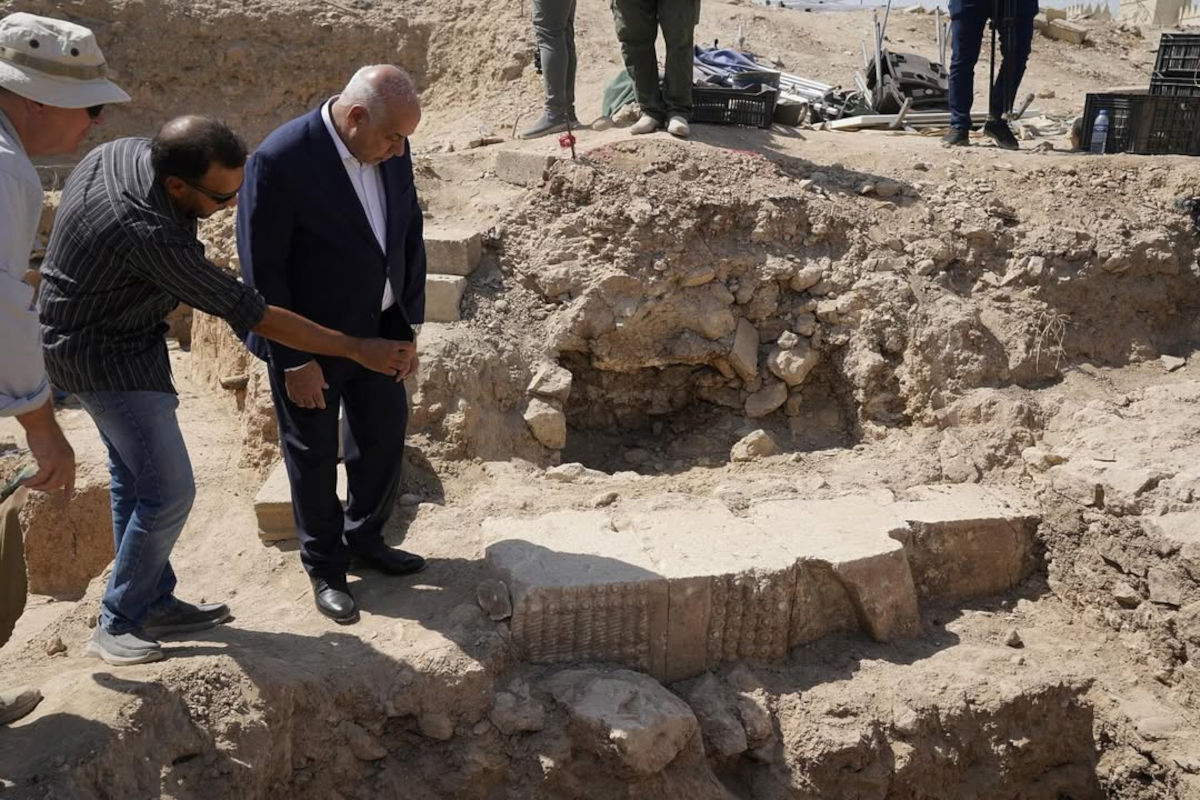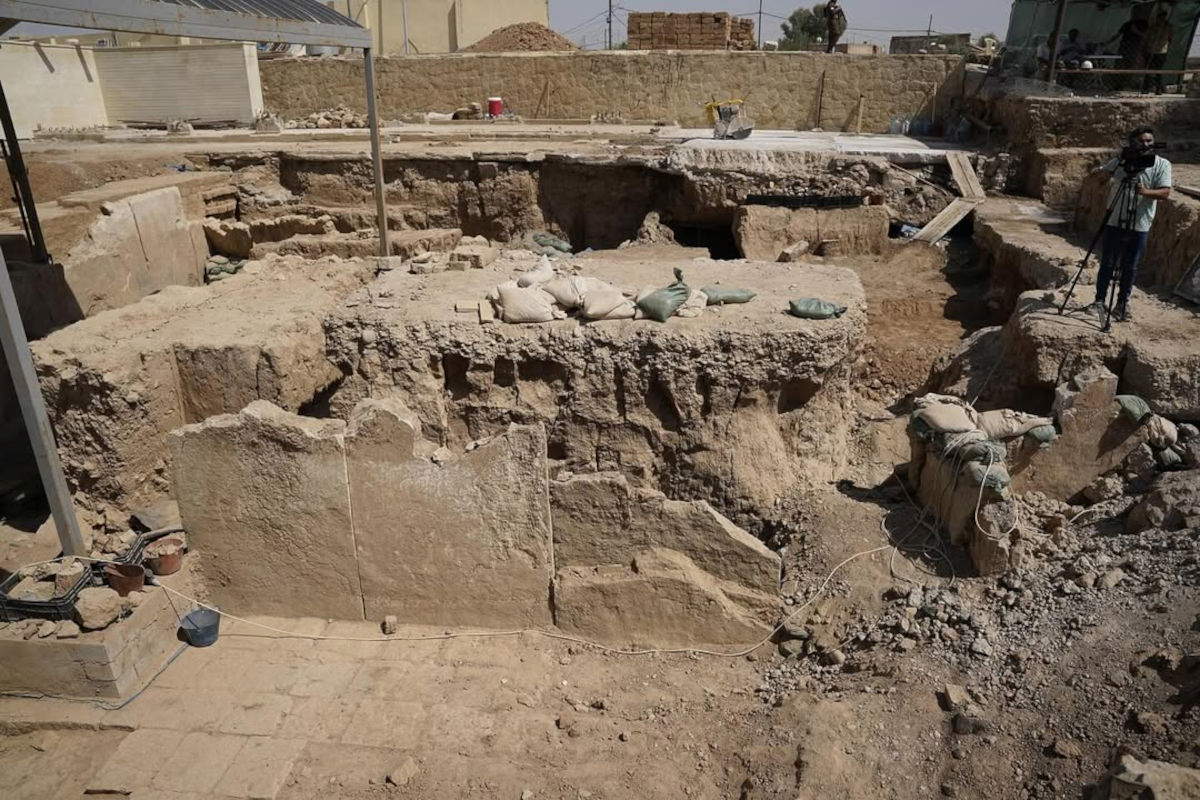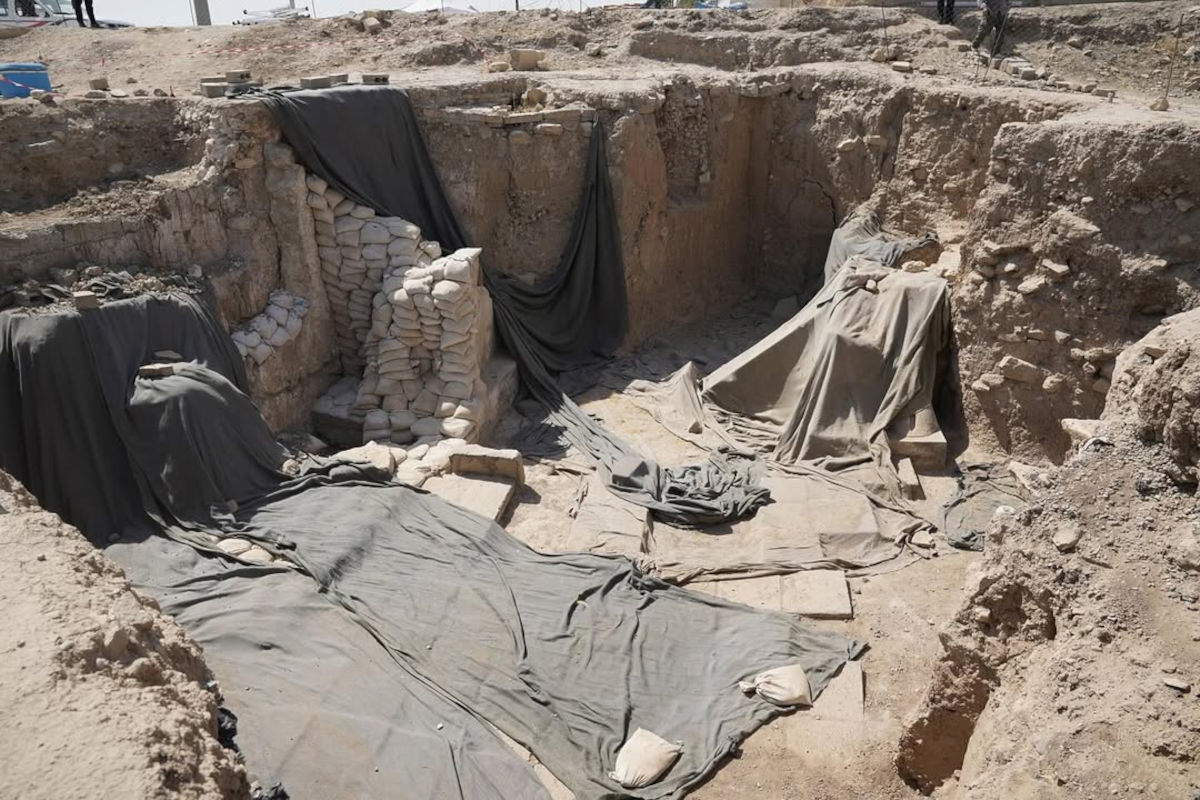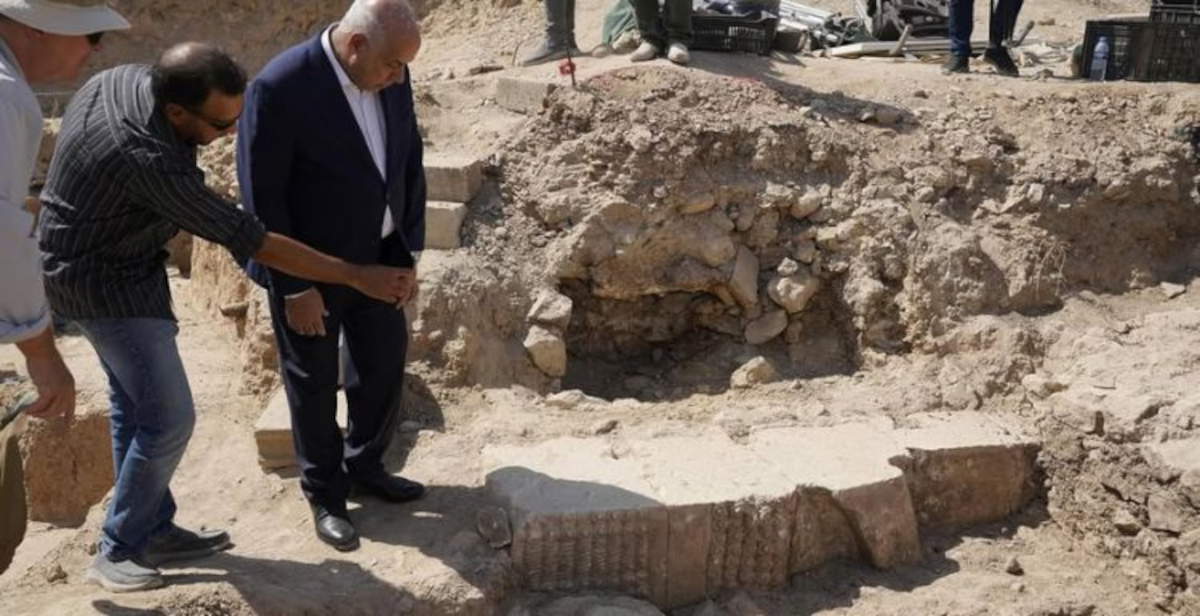A new piece of history resurfaces in Iraq. In Nineveh, in the ancient capital of theAssyrian Empire located near present-day Mosul, a major joint Iraqi-German archaeological mission has unearthed a second a winged bull(another statue of a winged bull had been unearthed at the site of Khorsabad in 2023), which decorated the facade of the palace of King Esarhaddon, the Assyrian ruler who reigned between 680 and 669 BCE.C. During the site visit, Iraq’s Minister of Culture, Tourism and Antiquities Ahmed Fakak al-Badrani expressed his appreciation for the efforts of the General Authority for Antiquities and Heritage and the Inspectorate of Antiquities and Heritage in Nineveh, acknowledging in fact the central role the institutions play in protecting Iraq’s cultural heritage.
The winged bull statue, known by its Akkadian name of lamassu, is one of the most recognizable figures in Assyrian art and religion. With the body of a bull or lion, eagle wings and a human head, it represented a protective creature placed at the entrances of palaces and temples to ward off evil spirits and enemies. The new specimen, found at the archaeological site of Tell Nabi Yunus, was in fact found decorating the monumental entrance to the palace of Esarhaddon, one of the most important rulers of the Sargonid dynasty.

During the visit, German archaeologist Peter Maklas, explained the techniques used to make the winged bulls and the specific characteristics of the specimen found. The archaeologist also presented a broader vision for the future of the Tell Nabi Yunus site: the idea is to create a museum project linking Assyrian heritage with Islamic heritage, two key components of the history of Mosul and northern Iraq. In this perspective, the new find represents a starting point for a broader cultural and tourism enhancement project.
The discovery of the second winged bull also takes on special symbolic significance for Nineveh, a city that has experienced severe destruction of its archaeological heritage due to conflict in recent decades. The recovery of evidence such as that of Tell Nabi Yunus is therefore an important step in the reconstruction of the region’s cultural identity and the reaffirmation of the central role Iraq continues to play in the study of ancient civilizations. The discovery of the lamassu of Esarhaddon offers scholars new insights into Assyrian palatial architecture and the symbolism of protective figures in the ancient Near East.


 |
| New Assyrian winged bull discovered in Nineveh (Iraq): a key piece of the Assyrian Empire |
Warning: the translation into English of the original Italian article was created using automatic tools. We undertake to review all articles, but we do not guarantee the total absence of inaccuracies in the translation due to the program. You can find the original by clicking on the ITA button. If you find any mistake,please contact us.